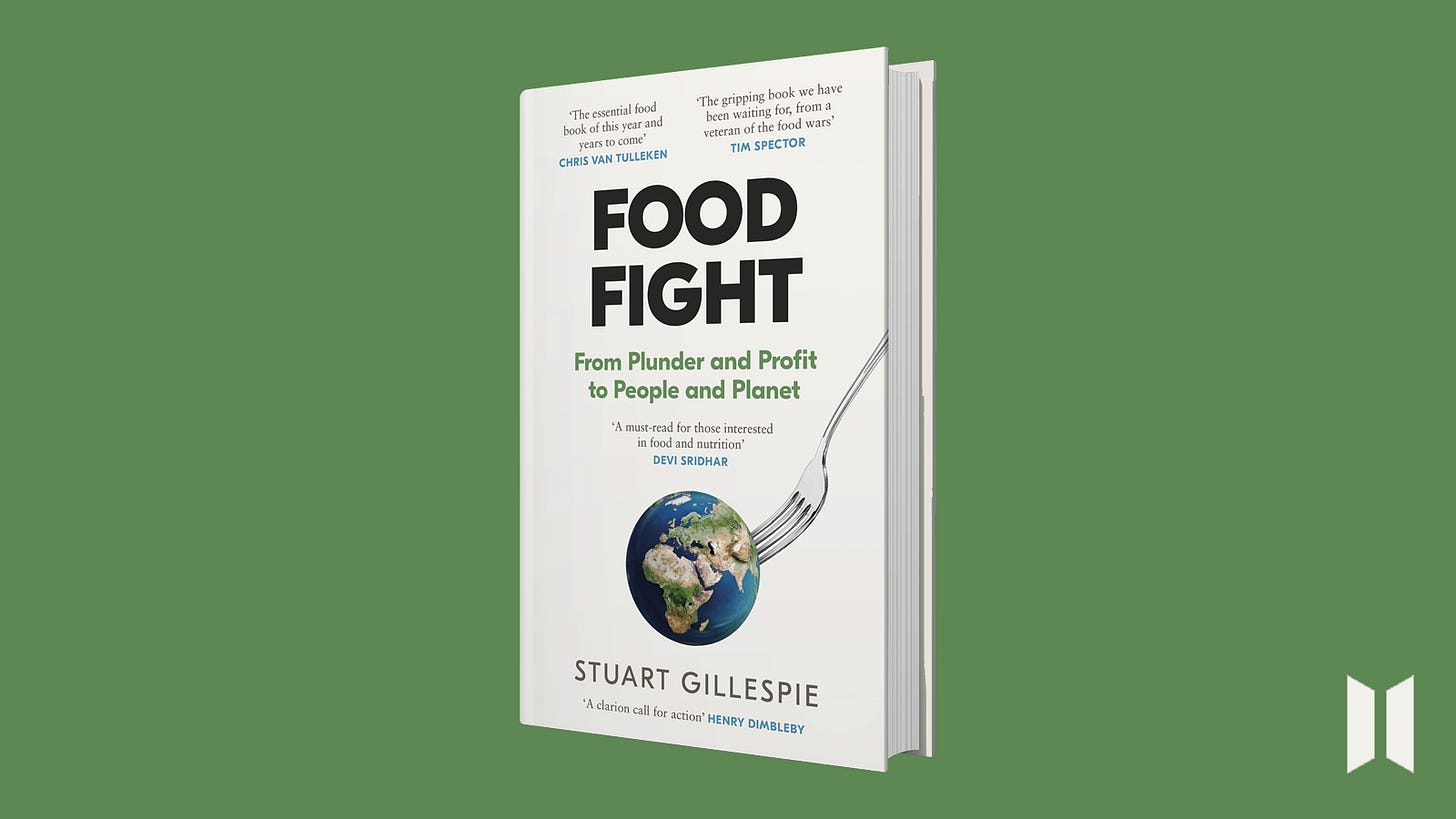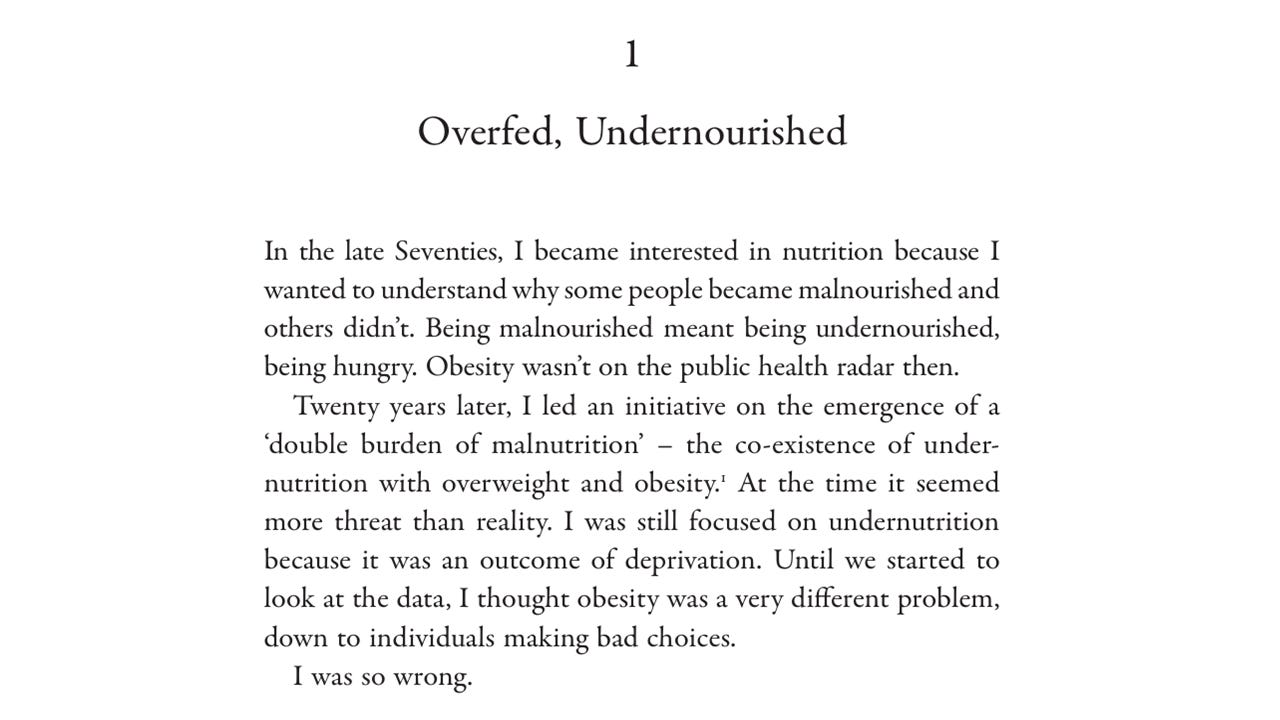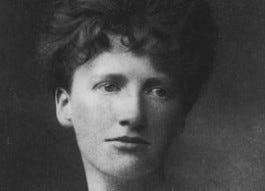From Plunder and Profit...
Strange how time accelerates…next month, Food Fight hits the shelves (for which I’m eternally grateful to all the wonderful people at Canongate and AM Heath and many others listed in the acknowledgements!)
The book has four parts – Cascade, Regime, Unravelling, Transformation.
The first three track the evolution of our global food system, unravelling the structural causes of the mess we’re in. The last part – which I’ll cover in my second post, later this month – suggests how we can turn things around. As a former UNICEF employee, from the glory days of the Triple A cycle, I know there can be no revolution without revelation.
As we head into the second quarter of the century, we’re enmeshed in a cascade of interlocking crises – health, climate, environment, poverty, inequity – at the heart of which sits our global food system. Designed in a different century for a different purpose, it’s now a source of jeopardy, destroying more than it creates.
Cascade offers a snapshot of the food, nutrition and health situation in the world now — the challenges we face, their manifestations, causes and consequences — with a few stories thrown in. The first chapter starts with a mea culpa:
We all learn on the job — that’s a good thing and nothing new — but I wasn’t expecting to learn so much writing this book. It was like going back to college in many ways. Digging into rabbit holes, many sidestepped in the past, can unearth diamonds (…as well as rabbit droppings).
In the second part Regime, we revisit the three food regimes that have most impacted how our food systems are structured today. Food regimes are launched and sustained by power. We travel through three centuries of slavery and colonialism and the birth of capitalism, three decades of the cold war, and on into the last half-century of the corporate regime in which our current food system is embedded.
We meet pioneers like Eglantyne Jebb, who was arrested for campaigning to protect German and Austrian children during the Allies blockade in the first world war. The judge at her trial was so impressed with her speech that he made the first ever donation to the organization she later founded, Save the Children.
We meet Ellama and Joggaya – two Koya tribals with whom I was lucky to live and work in the mid-eighties in Telangana, India. Along with many other heroes and villains (including Fritz Haber who was both).
As we travel through this history, we’ll see how certain foods and products have been developed and used — for better or worse – including sugar, bananas, lemons, milk, meat and breakfast cereals.
The third part, Unravelling is where we disentangle the structural drivers of the crisis cascade and explore how they operate. We’ll uncover many vicious cycles in which the feedback amplifies or accelerates the effect. We’ll see how the global food system has itself become a large part of the problem, having been captured by a handful of rapacious transnationals who profit from public ill-health while using an array of tactics to stop governments from getting in their way. We look at the climate and environmental implications of this system, and the way it thrives on inequalities and health shocks, including pandemics like AIDS and COVID. These structural causes derive from our collective failure to rein in harmful industries, address food injustice and hold our elected leaders to account for their actions. Or inaction.
We unpack the different forms of power and the way they are used – because ultimately, to truly transform our food system (rather than continuing to tinker at the margins), we need to make a radical shift in the balance of power.
‘Food Barons, Russian Dolls and Trojan Horses’ investigates corporate capture, while ‘The Dark Arts’ shows how market and financial power can be used to drive political power via a wide palette of tricks and devices to interfere with policy and politics — the ‘deadly Ds’.
But the book doesn’t just point the finger at corporate behemoths — it also explains why governments have failed to address our failing food system (‘Do-Nothing Politics’)
[To be continued in my next post where we’ll explore the final part…what to do!]
Oxford calling…
If you’re around the dreaming spires on 29 March, why not come and join us for a fascinating conversation on ethics and eating.
History repeats…
Remember when Big Tobacco — realising it couldn't compete with science —pivoted to buying scientists?
Well, here we go again…
Novo Nordisk makes billions from the obesity pandemic. It’s increasingly threatened by the growing backlash against ultra-processed foods.
The NOVA classification system, founded by Brazilian scientist Carlos Monteiro and colleagues, has been used by hundreds of researchers to define these ‘foods’ and investigate their associations with a panoply of health and environmental harms.
It’s used by international organisations and governments to monitor diet quality and improve regulatory policy.
This marriage between Big Pharma and Big Food — is a classic case of appropriation aimed at disrupting public health challenges to the UPF industry that drives obesity (and thus the demand for weight-loss injections supplied by Novo Nordisk).
To confuse, delay, distract, sow doubt…all the usual tactics.
Many scientists involved in ‘NOVA 2.0’ do not seem concerned by conflicts of interest as they happily take funds from Arla, McDonald's, McCain Foods, Nestlé and others.
Unfortunately for them and NN, the sunlight has got in….
It will fail.
And history is made…
‘It’s not a dream!’
A jubilant Simón Barquera posted these words after the Ministry of Education of Mexico announced the imminent ban on junk food (comida chatarra) in schools.
“After more than a decade, this marks the implementation of a vital government policy aimed at preventing obesity, diabetes, and other NCDs in children. I'm incredibly proud of the collaborative efforts of CSOs, academia, the government, along with UNICEF Mexico, WHO and PAHO in achieving this milestone.”
All for now…see you in a couple of weeks!







